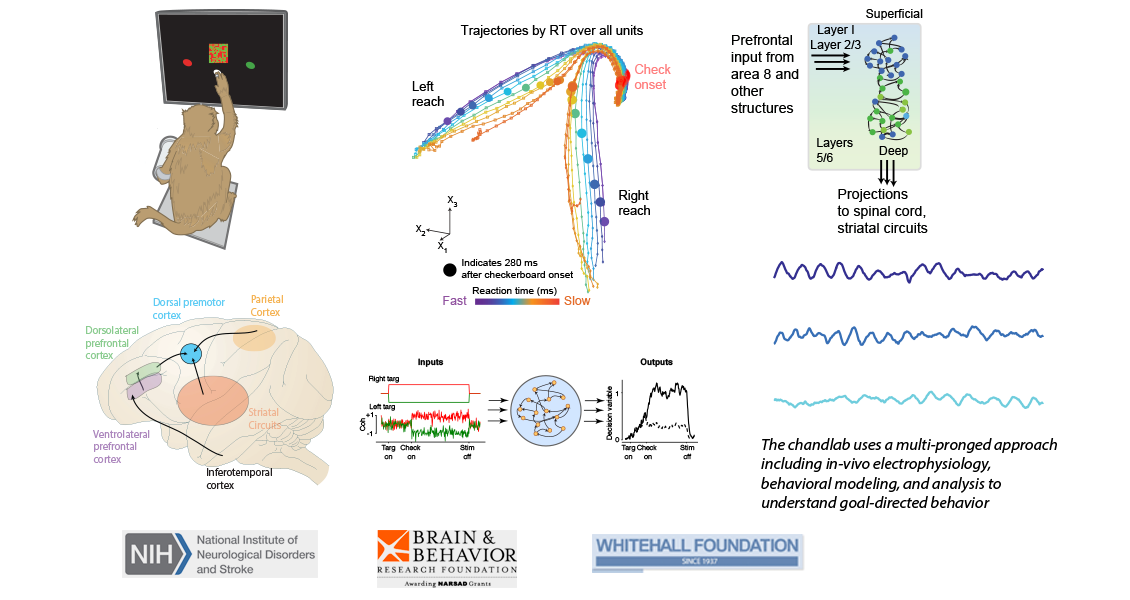Neural dynamics of decision-making and cognition
Our lab conducts research to better understand how the brain processes complex uni and multisensory input and generates the appropriate action at the right time. My research is guided by the ethos that understanding how the brain works will help us build better interventions for people with disabilities involving the nervous system. I expect my research career to aid translational efforts that use circuit level treatments and brain machine interfaces for patient populations. To study these questions, I use a combination of electrophysiological, behavioral and computational techniques.
My research agenda at Boston University is focused on understanding how the primate brain makes decisions based on sensory input and guides limb movement. Extensive evidence from stroke patients and physiological/lesion studies in humans suggest that a part of the brain called the dorsal premotor cortex is involved in selecting the appropriate limb movement on the basis of the sensory input. However, the exact computation as well as the implementation in the microcircuit in dorsal premotor cortex and prefrontal cortex that mediates the selection of a limb movement has not been clearly identified.
We address these types of questions by using a ‘dynamical system’ theoretical framework combined with measurements of activity of populations of neurons using linear multi contact electrodes and utah arrays in monkeys performing a “Decision” task. By analyzing the average, single trial activity patterns, and differences in neuronal properties across the lamina of cortex we hope to elucidate the computational and circuit mechanisms by which the brain guides limb movement on the basis of sensory input.
